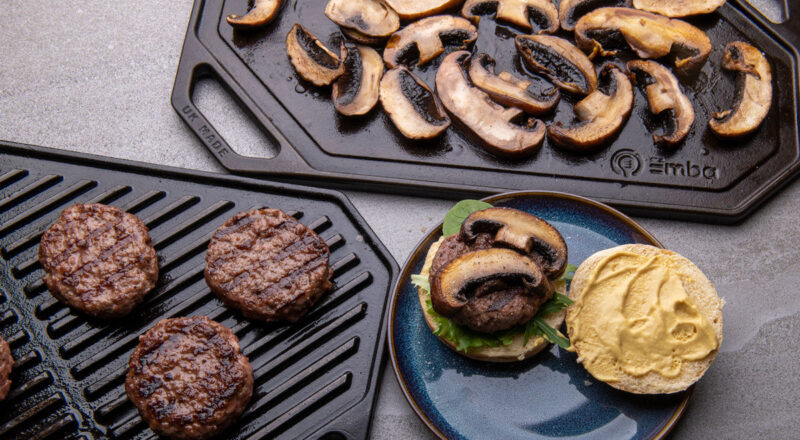For many kitchen enthusiasts, a reversible griddle serves as an essential cooking tool. However, the art of seasoning a griddle is often misunderstood, leading to common reversible griddle seasoning mistakes. Proper seasoning is crucial for ensuring that your griddle performs optimally, providing a non-stick surface that enhances the flavor of your food.
Understanding these mistakes can transform your cooking experience. Whether you’re a seasoned chef or a home cook, mastering the seasoning process can help you avoid undue frustration and ensure your griddle serves you well for many meals to come.

What is Griddle Seasoning?
Seasoning is the process of applying a layer of oil to the surface of your griddle and heating it to create a protective, non-stick coating. This process not only prevents food from sticking but also protects the griddle from rust and other forms of damage.
Common Reversible Griddle Seasoning Mistakes
Using the Wrong Type of Oil
One of the most common reversible griddle seasoning mistakes is using the wrong type of oil. Oils with low smoking points, like butter or margarine, can lead to sticky residue and uneven seasoning. Instead, use oils with high smoking points, such as grapeseed, flaxseed, or canola oil.
Applying Too Much Oil
Another frequent error is applying too much oil. A thick layer of oil can lead to a sticky, uneven coating. For effective seasoning, it’s best to apply a thin, even layer of oil. Excess oil should be wiped off before heating the griddle.
Not Heating the Griddle Properly
Under-heating or over-heating your griddle during the seasoning process can result in suboptimal results. Ensure that you heat your griddle to the correct temperature, allowing the oil to polymerize and bond to the surface effectively.
Skipping the Pre-cleaning Step
Failing to clean your griddle before seasoning is a common mistake that can lead to poor seasoning results. Always clean your griddle with warm, soapy water and dry it thoroughly before applying oil.
Steps to Properly Season Your Reversible Griddle
Step 1: Clean Your Griddle
Begin by washing your griddle with warm, soapy water to remove any manufacturing residues or previous cooking oils. Rinse and dry it completely.
Step 2: Apply the Right Oil
Choose an oil with a high smoking point and apply a thin, even layer across the entire surface of the griddle. Use a cloth or paper towel to spread the oil.
Step 3: Heat the Griddle
Place your griddle in the oven or on a stovetop burner and heat it until the oil reaches its smoking point. This allows the oil to bond with the griddle, creating a non-stick coating.
Step 4: Cool and Repeat
Allow the griddle to cool completely before repeating the seasoning process two or three more times. This builds up a durable, non-stick layer.
How Often Should You Season Your Griddle?
The frequency of seasoning depends on how often you use your griddle. Regular use may require seasoning every few weeks, while less frequent use might only need it every few months.
Maintaining Your Seasoned Griddle
To maintain your seasoned griddle, avoid using soap for regular cleaning. Instead, use hot water and a brush to scrub away food particles. Dry it thoroughly and apply a thin layer of oil after each use to maintain the seasoning.
Choosing the Right Reversible Griddle
When selecting a reversible griddle, consider factors such as size, material, and compatibility with your cooking appliances. For detailed guidance, you can visit this griddle compatibility guide.
Benefits of a Well-Seasoned Griddle
A well-seasoned griddle offers numerous benefits, including improved food flavor, easier cleaning, and enhanced durability. By avoiding common seasoning mistakes, you can maximize these advantages.
Experimenting with Different Foods
Once your griddle is properly seasoned, you can experiment with a variety of foods. For inspiration, check out this cooking guide to discover new recipes and techniques.

Commonly Asked Questions
How do I know if my griddle is properly seasoned?
A properly seasoned griddle should have a smooth, dark surface that is free from sticky spots or rust. Food should slide off easily when cooked.
Can I use my griddle on any stovetop?
While many griddles are versatile, it’s important to ensure compatibility with your stovetop. Visit this compatibility guide for more information.
What should I do if my griddle starts to rust?
If your griddle begins to rust, clean it thoroughly with a brush and reapply the seasoning process. Regular maintenance will prevent future rusting.
By avoiding these reversible griddle seasoning mistakes and following the proper steps, you can ensure that your griddle remains a reliable tool in your kitchen, providing delicious and perfectly cooked meals for years to come.
This article contains affiliate links. We may earn a commission at no extra cost to you.

